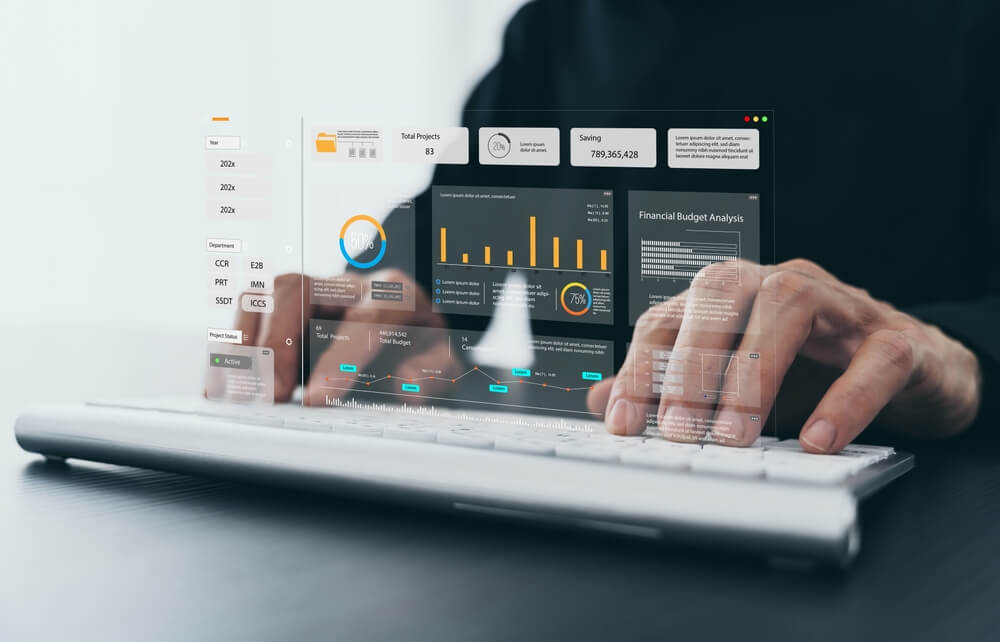
What Is Local Market Analytics? Easy Primer for SMBs
Small- and medium-sized businesses (SMBs) in Nevada are often up against big names with equally huge budgets and powerhouse marketers. How can they compete? The answer is to follow a highly localized digital marketing plan incorporating Las Vegas analytics.
This blog post is your introduction to local market analytics. In it, you will learn the following:
- Definition of local market analysis
- Top reasons you should do it
- Best time to conduct an analysis
- People who must analyze the data
- Basic steps to gather, process, and interpret local information
Understanding the nuances of your local environment can set your business apart and help you compete aggressively against huge brands. Read the guide below to learn more. Let’s go!
What Is Local Market Analysis?

As its name suggests, local market analysis is the process of collecting, analyzing, and interpreting information about a specific geographic area. This region can be as broad as an entire city or as narrow as a specific neighborhood or street.
It looks at many data types based on the objective. These include:
- Demographics (age, gender, income levels, education, and occupation)
- Psychographics (consumer mindset, lifestyle, interests, values, and buying motivations)
- Competition (strengths, weaknesses, marketing strategies, and customer base)
- Economic indicators (local economy’s health, unemployment rates, future growth predictions, and other macroeconomic factors)
- Supply and demand
- Marketing and consumer trends and patterns
For example, 2023 data showed that millennial homeownership in Las Vegas increased by 28.04%. If you are a real estate firm in the city that wants to sell to Generation Y, a significant aspect of your online marketing strategy should focus on financial education. You might include a housing cost calculator on your website, advertise starter homes on pay-per-click (PPC), or invite financial experts to give advice on your blogs.
Local research improves your online marketing strategies, making them responsive to the needs and challenges of your audience.
Why Is It Important?

Conducting a thorough local market analysis has benefits such as the following:
- Letting you customize your marketing techniques, products, and services to the demands and preferences of your targeted leads
- Identifying gaps in the market or areas underserved by competitors
- Reducing costly business risks by making you more aware of local challenges or potential issues (e.g., new regulations that can affect your industry)
- Enhancing or amplifying your brand’s unique values for your audience
- Informing you how you fare against your rivals
- Guiding you in allocating resources more efficiently
One of the companies that benefited immensely from the local market analysis is Ikea. Although this Swedish furniture maker is not small, SMBs can learn much from its retail strategy.
This big-box retailer usually builds its stores in the suburbs or outskirts of the city for two reasons:
1. A typical Ikea spans over 300,000 square feet or five football fields.
2. It forces visitors to spend more time inside to maximize their travel.
However, as more competitors appear and flourish, the brand has to adjust to market sentiments. Smaller versions exist in tiny cities such as Hong Kong and the Canary Islands. Ikea La Madeleine in Paris opened in 2019 and is only 20 minutes away by public transport.
Meanwhile, Ikea Dubai used creativity to encourage people to drive. For instance, it launched the Buy with Your Time Campaign. In this promotion, buyers can exchange their travel time to the store for discounts or free items.
Ikea also expanded its product line to include its now-famous Swedish cafe and restaurant, which has increased the store’s direct and indirect sales. Its well-designed online store encouraged offline purchases.
When Is the Best Time to Conduct an Analysis?

Depending on your marketing objectives and industry, it is best to perform a local market analysis every one to three years. However, it is necessary when you:
- Plan to enter a new market, whether a new city in Nevada or demographic,
- Want to expand or diversify your products and services,
- Observe or experience major economic changes or social shifts such as the COVID-19 pandemic, recession, or inflation,
- Face a tough competitor, whether it be another SMB or a big brand such as Ikea, and
- Change your market or business priorities.
Who Should Do It?
As an SMB, you might be tempted to research and analyze the local market yourself. There are many applications that can curate, process, and even interpret data in real time. Google’s G4 features a geo-based tool that lets you run A/B tests and helps you understand their effects on your iOS app marketing campaigns.
However, there are a lot of points to consider and analyze, and doing it yourself takes away time from your products or your established marketing campaigns. If you want more accurate and useful results, consider working with an expert in Las Vegas analytics. This can be a digital marketing firm offering a holistic plan, a fractional chief marketing officer (CMO), or a marketing strategy consultant.
These professionals:
- Possess the skills and expertise to gather even the more obscure information while focusing on the information most relevant to you;
- Have an extensive network or membership in prestigious organizations, such as the National Federation of Independent Business, which helps them spot growing market trends and shifts in consumer behavior early;
- Design a resilient marketing plan that can easily adapt to major changes within and outside the business;
- Gain access to more advanced tools; and
- Interpret and convert data into a more digestible and understandable format so that you can make quicker and wiser decisions.
How Do You Conduct a Local Market Analysis for Your Business?

The most basic analysis involves these five steps:
1. Define your objectives to help determine the metrics and methods of tracking. Do you plan to launch a new product? Would you like to strengthen your local SEO strategies? Are you creating a five-year budget and want to know how much to spend on advertising?
2. Gather your data. These can be primary, such as surveys, interviews, focus groups, or direct observations. The other is secondary information from existing data sources. Examples are state reports, industry publications, or academic studies relevant to the local market. As a tip, prioritize first-party data to minimize legal and privacy risks.
3. Expand your analysis. Include local competitors and economic conditions. Use frameworks such as SWOT and Porter’s Five Forces to zero in on intrinsic and extrinsic opportunities and challenges.
4. Interpret the data. Apply analytical modeling to sift through the information. Use visualization to represent complex data sets in a comprehensible manner. Validate your findings with cross-referencing and seek input from experts in the field.
5. Formulate or fine-tune your local marketing strategies: Based on the gathered insights, develop or refine your strategies. For example, if you identify a strong preference among the local audience for eco-friendly products, consider integrating sustainable practices into your offerings or highlighting your existing green initiatives.
Summing Up
Local market analytics is not just a fancy term. It is crucial for SMBs that want to level the playing field or even surpass the online performance of big businesses. This primer empowers you with the tools and knowledge to do that.
Need an analytical expert? Digital Authority Partners (DAP) is an experienced Las Vegas analytics firm that deeply understands local communities. With our expertise, you can be agile, foster deep relationships with your audience, and drive and sustain growth even with limited resources.
Contact us today to learn more.
Want To Meet Our Expert Team?
Book a meeting directly here




